Olmec Civilization › The Great Palace of Constantinople › Hasdrubal Barca » Origins and History
Articles and Definitions › Contents
- Olmec Civilization › Ancient History
- The Great Palace of Constantinople › Antique Origins
- Hasdrubal Barca › Who Was
Ancient civilizations › Historical places, and their characters
Olmec Civilization › Ancient History
Definition and Origins
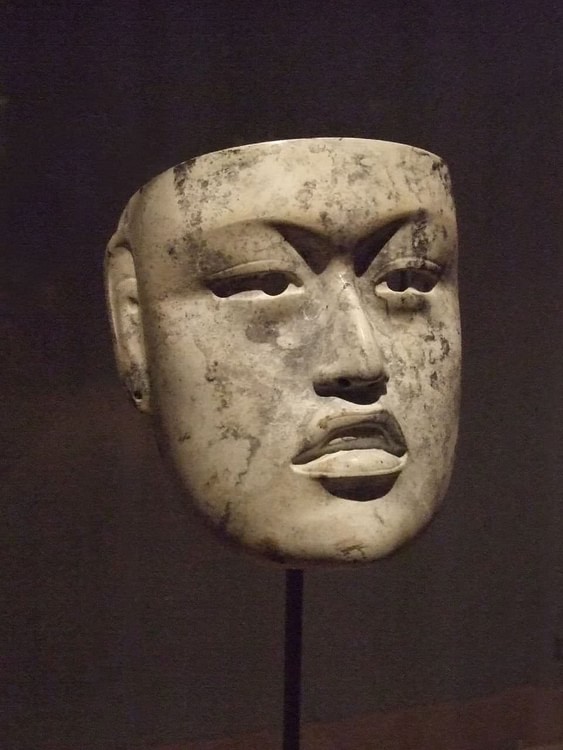
The mysterious Olmec civilization, located in ancient Mexico, prospered in Pre-Classical (Formative) Mesoamerica from c.1200 BCE to c. 400 BCE and is generally considered the forerunner of all subsequent Mesoamerican cultures including the Maya and Aztecs. With their heartlands in the Gulf of Mexico (now the states of Veracruz and Tabasco), Olmec influence and trade activity spread from 1200 BCE, even reaching as far south as present-day Nicaragua. Monumental sacred complexes, massive stone sculptures, ball games, the drinking of chocolate, and animal gods were all features of Olmec culture which would be passed on to those peoples who followed this first great Mesoamerican civilization.
THE OLMEC ENIGMA
The Olmec civilization presents something of a mystery, indeed, we do not even know what they called themselves, as Olmecwas their Aztec name and meant 'rubber people'. Due to a lack of archaeological evidence their ethnic origins and the location and extent of many of their settlements are not known. The Olmecs did, however, codify and record their gods and religious practices using symbols. The precise significance of this record is much debated but, at the very least, its complexity does suggest some sort of organised religion involving a priesthood. The Olmec religious practices of sacrifice, cave rituals, pilgrimages, offerings, ball-courts, pyramids and a seeming awe of mirrors, was also passed on to all subsequent civilizations in Mesoamerica until the Spanish Conquest in the 16th century CE.
AROUND 900 BCE LA VENTA FLOURISHED AS THE NEW CAPITAL & EVENTUALLY BOASTED A POPULATION OF AROUND 18,000.
OLMEC CITIES
Olmec prosperity was initially based on exploiting the fertile and well-watered coastal areas of the Gulf of Mexico to grow such crops as corn and beans (often twice-yearly) which allowed for an agricultural surplus. They also, no doubt, gathered the plentiful local supply of plant food, palm nuts and sea-life, including turtles and clams. By c. 1200 BCE significant urban centres developed at San Lorenzo (the earliest), La Venta, Laguna de los Cerros, Tres Zapotes and Las Limas. San Lorenzo reached its peak of prosperity and influence between 1200 and 900 BCE when its strategic position safe from flooding allowed it to control local trade. Typical Olmec trade goods included obsidian, jade, serpentine, mica, rubber, pottery, feathers and polished mirrors of ilmenite and magnetite.

Principal Olmec Settlements
Evidence of San Lorenzo's high culture includes the presence of mound structures, possibly an early ball court, carved basalt drains through one of the man-made mounds and the Red Palace structure with painted red floors and workshops. Around 900 BCE the site of San Lorenzo displays evidence of systematic destruction whilst La Venta, conversely, began to flourish, and becoming the new capital, it eventually supported a population of some 18,000.
The three sites of San Lorenzo, La Venta and Laguna de los Cerros all had a bilateral symmetry in their planning and at La Venta the first pyramid in Mesoamerica was constructed. It is the pre-meditated architectural layout of the religious centres of these settlements that is most striking, for example, at La Venta the buildings are placed symmetrically along a north-south axis with four colossal heads facing outwards at key points, seemingly acting as guardians to the complex. A huge ceremonial step pyramid (now a shapeless mound), sunken plaza once lined with 2-metre high basalt columns, and two smaller pyramids/mounds provide features that would be copied time and again at the major sites of later Mesoamerican cultures with whom equal attention was paid to the precise alignment of buildings. La Venta, as with San Lorenzo, suffered systematic and deliberate destruction of its monuments sometime between 400 and 300 BCE.

Olmec Colossal Head
RELIGIOUS BELIEFS
As with other areas of Olmec culture, details of their religion are sketchy. Nevertheless, with an ever-increasing body of archaeological evidence it is possible to piece together some of the most important features of Olmec religion. The Olmecs seem to have had a particular reverence for natural places which connected with the important junctions of sky, earth and the underworld. For example, caves could lead to the underworld and mountains which had both springs and caves could offer access to all three planes. Important Olmec mountain sites were El Manatί, Chalcatzingo and Oxtotitlan.
THE OLMECS ALSO LIKED TO MIX ANIMALS TO CREATE WEIRD & WONDERFUL CREATURES SUCH AS THE WERE-JAGUAR, A CROSS BETWEEN A HUMAN & A JAGUAR.
The names of the gods of the Olmec are not known other than that they often represented phenomena such as rain, the earth and especially maize. For this reason, identifiable gods from Olmec art have been given numbers instead of names (eg God VI). The Olmecs gave special significance to the animals present in their environment, especially those at the top of the food chain such as jaguars, eagles, caimans, snakes and even sharks, identifying them with divine beings and perhaps also believing that powerful rulers could transform themselves at will into such fearsome creatures. The Olmecs also liked to mix animals to create weird and wonderful creatures such as the were-jaguar, a cross between a human and a jaguar, which may have been their supreme deity. We also know that they worshipped a sky-dragon and that they believed four dwarves held up the sky, possibly representing the four cardinal directions which, along with other Olmec gods, became so important in later Mesoamerican religions.
OLMEC ART
The most striking legacy of the Olmec civilization must be the colossal stone heads they produced. These were carved in basalt and all display unique facial features so that they may be considered portraits of actual rulers. The heads can be nearly 3 m high and 8 tons in weight and the stone from which they were worked was, in some cases, transported 80 km or more, presumably using huge balsa river rafts. 17 have been discovered, 10 of which are from San Lorenzo. The ruler often wears a protective helmet (from war or the ballgame) and sometimes show the subject with jaguar paws hanging over the forehead, perhaps representing a jaguar pelt worn as a symbol of political and religious power. The fact that these giant sculptures depict only the head may be explained by the belief in Mesoamerican culture that it was the head alone which bore the soul.

Olmec Stone Mask
Another permanent record of the Olmecs is found in rock carvings and paintings. Often made around cave entrances they most typically depict seated rulers, as for example at Oxtotitlan, where a figure wears a green bird suit and at Chalcatzingo where another ruler sits on her throne surrounded by a maize landscape. At other sites there are also paintings of cave rituals, for example, at Cacahuazqui, Juxtlahuaca and Oxtotlan.
INTRIGUINGLY, THE OLMECS OFTEN BURIED THEIR SCULPTURES, EVEN LARGER PIECES, PERHAPS IN A RITUAL ACT OF MEMORY.
Jade and ceramic were other popular materials for sculpture and also wood, some examples of which were remarkably well preserved in the bogs of El Manati. One of the gods most commonly rendered in small sculpture was God IV, sometimes called the Rain Baby, who is a toothless human baby with an open-mouth, cleft head and headband, sometimes with the addition of strips of crinkled paper hanging at the side of his face (another feature seen in the gods of later cultures and representing the paper and rubber sap strips which were burnt during rites as the smoke was thought to propitiate rain).
Perhaps the most significant jade carving is the Kunz Axe, a ceremonial axe-head now in the American Museum of Natural History in New York. The jade has been worked to represent a were-jaguar creature using only jade tools and then polished, perhaps using a jade abrasive. Animals were a popular subject, especially those most powerful ones such as jaguars and eagles. Intriguingly, the Olmecs often buried their sculptures, even larger pieces, perhaps in a ritual act of memory.
LEGACY IN MESOAMERICA
The Olmecs influenced the civilizations they came into contact with across Mesoamerica, particularly in sculpture in ceramic and jade and objects featuring Olmec imagery have been found at Teopantecuanitlan, 650 km distant from the Olmec heartland. In addition, many deities featured in Olmec art and religion such as the sky-dragon (a sort of caiman creature with flaming eyebrows) and the feathered-snake god, would reappear in similar form in later religions. The snake-god especially, would be transformed into the major gods Kukulcan for the Maya and Quetzalcoatl for the Aztecs. This artistic and religious influence, along with the features of precisely aligned ceremonial precincts, monumental pyramids, sacrificial rituals and ball-courts, meant that all subsequent Mesoamerican cultures would owe a great deal to their mysterious forerunners, the Olmecs.
The Great Palace of Constantinople › Antique Origins
Ancient Civilizations
The Great Palace of Constantinople was the magnificent residence of Byzantine emperors and their court officials which included a golden throne room with wondrous mechanical devices, reception halls, chapels, treasury, and gardens. In use from 330 to 1453 CE, it was sumptuously decorated throughout with exotic marble and fine mosaics to impress visitors from near or far with the wealth and power of the Byzantine Empire.
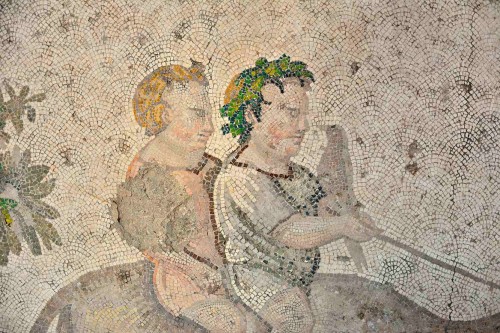
Byzantine Mosaic of Children Seated on a Dromedary
CONSTRUCTION & LAYOUT
The Great Palace was first constructed by emperor Constantine I (r. 306-337 CE) on an elevated part of the city and then added to by his successors until it became something of a sprawling and eclectic magnificence. Located just east of the city's Hippodrome, the palace occupied a rectangular space against the sea walls of the city to the south-east and the forum and Hagia Sophia church to the immediate north-east. A residential wing, the Palace of Daphne, connected the palace to the city's famous circus so that emperors could easily and safely attend the public spectacles held there. Over the centuries the complex would include:
- a magnificent throne room
- halls for official audiences, state banquets, and coronations
- various reception rooms
- several churches and chapels
- a university
- Roman baths
- a grand library where new manuscripts were also produced
- sleeping quarters for the royal family and their entourage
- the Pharos signal tower
- a barracks for the royal guards
- gardens with terraces and fountains
- a polo field
- many examples of fine art, especially mosaics and statues.
Many of these buildings and features, constructed over different centuries, were connected by corridors and covered collonaded walkways. The whole complex was surrounded by a wall during the reign of Justinian II (r. 685-711 CE).
THE PALACE'S MAIN ENTRANCE WAS THE MONUMENTAL CHALKE GATE WHICH WAS USED FOR CEREMONIAL PROCESSIONS SUCH AS TRIUMPHS.
The general layout and key elements are possible to reconstruct from such descriptions as found in Constantine VII ’s Deceremoniis ( On the Ceremonies of the Byzantine Court ), written in the 10th century CE. Unfortunately, modern archaeological excavations at the site have been unable to add many details on specific buildings within the palace complex as it was completely built over by the Ottomans.
KEY BUILDINGS
The palace's main entrance was the monumental Chalke Gate which was used for ceremonial processions such as triumphs.It had gigantic bronze doors, perhaps explaining its name 'brazen' or chalke. The version built by Justinian I (r. 527-656 CE) had four arches supporting a dome and covered colonnade. The interior of the dome was decorated with a glittering mosaicdepicting the emperor and his empress Theodora along with a select group of senators. Justinian's victories over the Gothsand Vandals were also shown. The exterior of the gate carried statues of such figures as past Byzantine emperors, Justinian's foremost general Belisarius, Greek philosophers, and four Gorgons. Most splendid of all was the biggest icon in Constantinople, a gilded representation of Jesus Christ known as Christ Chalkites.
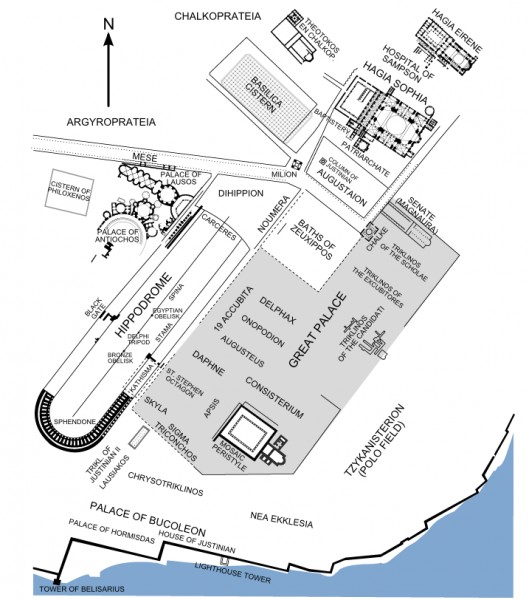
Plan of the Hippodrome of Constantinople
The Chrysotriklinos, built by Justin II (r. 565-574 CE) was the main audience hall which was resplendent in gold decorations, hence its name which means "Golden Hall". Used as the principal reception room, the emperor had a throne in the apse and fine chairs were set out for visitors. To make sure such visitors were left in no doubt as to the emperor's power and wealth there was a huge cabinet, the pentapyrgion, which was filled with treasures from across the empire. The hall had eight vaulted niches which led to other rooms, 18 windows, and a massive domed ceiling.
The Great Palace also functioned as a huge treasure store and not just of gold, silver, gemstones, and war booty but also of priceless religious artefacts. The most revered were the relics related to Christ's crucifixion which were held in the chapel of the Virgin of the Pharos. Another priceless artefact was the Mandylion icon. This was a shroud thought to be imprinted with an impression of the face of Jesus Christ in the now classic pose known as the Pantokrator which is seen today in churches worldwide. The shroud was taken to France by Crusader knights but then lost during the French Revolution.
THE PURPLE ROOM
Constantine V (r. 741-775 CE) added a particularly long-lasting and important feature to the palace. The emperor had seven children in all, and the birth of his first, his son Leo, would give rise to the oft-used expression, “to be born in the purple” or porphyrogennetos. The phrase derived from the porphyry, a rare purple-laced marble, that was used in a chamber of the palace where Leo's birth, and many subsequent royal ones, took place. The restriction that only royalty wore robes made with the expensive Tyrian purple dye dated back to Roman times, and this new tradition was one more attempt to further reinforce the legitimacy of dynastic succession and deter would-be usurpers.
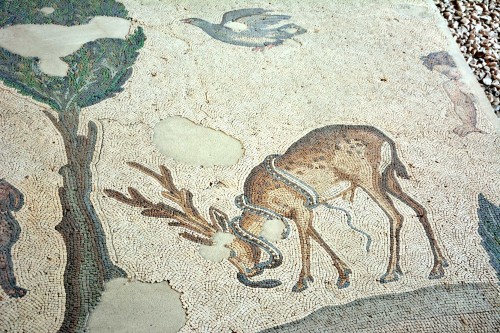
Stag & Snake, Byzantine Mosaic
RESTORATION OF THEOPHILOS
Emperor Theophilos (r. 829-842 CE) is credited with a lavish restoration of the royal palace and its gardens, which, over the centuries, had become something of a hotchpotch architectural mess. Buildings were ripped down and new homogenous ones with connecting corridors were built using white marble, fine wall mosaics, and columns in rose and porphyry marble.
THEOPHILOS COMMISSIONED LEO THE MATHEMATICIAN TO MAKE A THRONE THAT COULD SUDDENLY LIFT THE EMPEROR UP TO THE HEIGHT OF THE CEILING.
Best of all was the Magnaura. This building was a basilica with three aisles and galleries and was used as a reception room.To impress visitors, Theophilos commissioned the fiendishly inventive Leo the Mathematician to make a throne that could suddenly lift the emperor up to the height of the ceiling while automated golden organs blasted out music. The other wonders of this golden throne room are here described by the historian L. Brownworth:
No other place in the empire - or perhaps the world - dripped so extravagantly in gold or boasted so magnificent a display of wealth. Behind the massive golden throne were trees made of hammered gold and silver, complete with jewel-encrusted mechanical birds that would burst into song at the touch of a lever. Wound around the base of the tree were golden lions and griffins staring menacingly from beside each armrest, looking as if they could spring up at any moment. In what must have been a terrifying experience for unsuspecting ambassadors, the emperor would give a signal and a golden organ would play a deafening tune, the birds would sing, and the lions would twitch their tails and roar. (162)
The Tetraconch of Theophilos was another of the emperor's additions, a four-winged building whose floor plan formed a Greek cross. Then, a little later in the mid-9th century CE Caesar Bardas, the brother of Theodora, regent of Michael III (r. 842-867 CE), was responsible for establishing the famous university in the Magnaura, where one of the faculties was headed by Leo the Mathematician.
BASIL I ’S ADDITIONS
The next notable addition was the Nea Ekklesia (New Church), built by Basil I (r. 867-886 CE) within the grounds of the palace.The church was magnificent with five gilded domes, exotic coloured marble, and gem-studded walls on the inside, silver decorations and archangels on the outside, two fine fountains and bells shipped in from Venice. Unfortunately for modern tourists, the church blew up in 1453 CE after the Turks had been using it as a gunpowder store.

Byzantine Gooseherd Mosaic
Basil also built for himself a brand new palace within a palace, the Kainourgion. It had mosaic flooring depicting giant eagles, wall paintings, eight columns of green stone, and eight of onychite (a type of marble), and a throne room with a ceiling made from glass mosaic and solid gold filling. There was a half-dome at one end of this room with a giant painting of Basil and adoring generals presenting the emperor with a symbol from each city that his armies had conquered.
ATTACKS ON THE PALACE
The Great Palace may have been the royal residence but this did not make it immune to damage from the people and sometimes even emperors themselves. The Chalke Gate was destroyed during the Nika Revolt of 532 CE when supporter factions of the Hippodrome went on the rampage fuelled by the general populace's displeasure at the heavy tax policies of emperor Justinian I. Brutally quashing the 11-day riot, Justinian then rebuilt the Chalke. The palace was not impregnable to assassins either, as shown by the small group who disguised themselves as monks and butchered Leo V the Armenian (r. 813-820 CE) while he was in one of the chapels on Christmas Day in 820 CE.
Emperor Leo III (r. 717-741 CE) was a staunch iconoclast, that is, he believed the worship of Christian images was idolatrous.Leo began his campaign of smashing icons with the biggest of them all, insisting that the golden image of Jesus Christ above the Chalke Gate be removed in 726 CE. A riot of protestors broke out, and rumblings of discontent could be heard everywhere from Italy to Greece, but it did not stop Leo on his wrecking mission. It would not be until the end of iconoclasm in 843 CE that the bishop of Constantinople, Methodios (r. 843-847 CE), commissioned the celebrated painter Lazaros to work on a new icon of Christ for the gate.
LATER HISTORY
Alexios I Komnenos (r. 1081-1118 CE) and his successors abandoned the Great Palace, choosing instead to reside in the sumptuous Blachernae Palace located in the north-west part of Constantinople which boasted up to 300 rooms and 20 chapels. The Great Palace continued to be used for state functions and receptions, though. From 1204 CE, following the sack of Constantinople during the Fourth Crusade, the Great Palace was used by the Latin emperors. It was during the sack of Constantinople that the chapels of the Great Palace were looted for their holy relics which were spirited away to churches in the west such as the chapel of Louis IX in Paris. From the reign of Michael VIII Palaiologos (1259-1282 CE) the palace went into further decline.
Not very much of the Great Palace's once fine buildings have survived but one of their common but most beautiful features has; the floor mosaics. Depicting all manner of scenes from Byzantine daily life but especially scenes of nature, hunting, and children playing games, the surviving mosaics mostly date to the 6th century CE, and they can be seen today in the Great Palace Mosaic Museum of Istanbul.
Hasdrubal Barca › Who Was
Definition and Origins
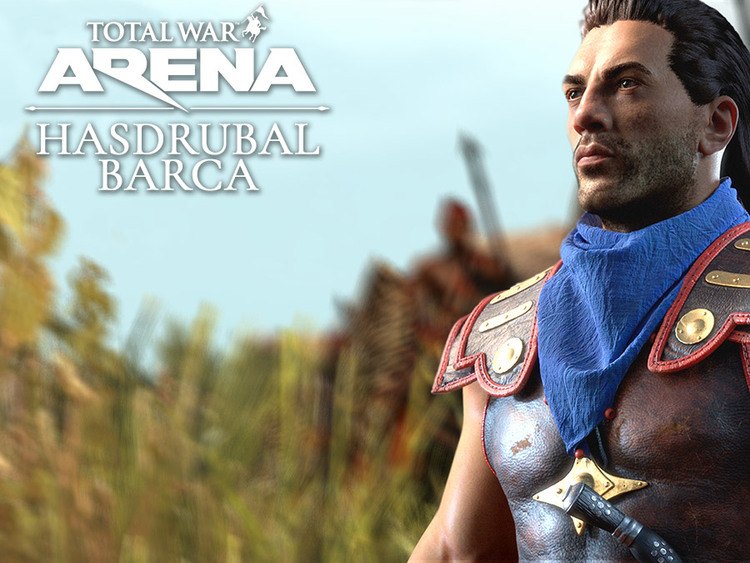
Hasdrubal Barca (c. 244-207 BCE) was the younger brother of the Carthaginian general Hannibal (247-183 BCE) and commanded the forces of Carthage against Rome in Spain during the Second Punic War (218-202 BCE). They were both, along with another brother named Mago, sons of the general Hamilcar Barca (c. 285 - c. 228 BCE) who led the Carthaginian armies during the First Punic War (264-241 BCE). Rome won the first war with Carthage and imposed heavy terms on the city which eventually resulted in Hannibal initiating the Second Punic War.
Although Hasdrubal's efforts are routinely overshadowed by his brother's brilliant military tactics, the younger brother was an adept leader and strategist in his own right who achieved a number of significant victories against Rome and rallied allies to the Carthaginian cause. He maintained Carthaginian strength in Spain while Hannibal took the fight to the Romans in Italythrough his famous march over the Alps, returned to Africa to fend off an attack by Syphax of the Numidian Masaesyli tribe (an ally of Rome at the time), and was responsible for the military victory over the Scipio brothers of Rome at the Battle of the Upper Baetis in 211 BCE, the only land victory for Carthage in the entire war not led by Hannibal.
At the same time, however, his reputation is marked by significant oversights and errors. He allowed Scipio Africanus to take New Carthage in Spain by poorly fortifying the city, probably in the belief that it was impregnable, spent too much time in Italy laying siege to the city of Placentia, and – most notably – let information on his plans, position, and his army's strength fall into Roman hands on his march to join forces with his brother in Italy. This last error in judgment would lead to his defeat and death at the Battle of the Metaurus in 207 BCE.
EARLY LIFE & THE SECOND PUNIC WAR
Hasdrubal grew up in the family palace at Carthage, son of a general with an illustrious reputation for his leadership during the First Punic War. Even though Carthage was defeated, no hint of shame attached itself to Hamilcar Barca, who was recalled to action to put down the Mercenary Revolt of 241 BCE and was given command of the Carthaginian expedition to Spain in 237 BCE.
Hannibal was only nine years old when his father asked him to come on this expedition and, according to the ancient historian Livy, made him swear on the altar that he would always remain an enemy of Rome. Hamilcar then took his oldest son with him on campaign, as well as his son-in-law Hasdrubal the Fair (c. 270-221 BCE), and left his wife and younger children in Carthage. At some point, Hamilcar must have sent for his younger son to join him because Hasdrubal Barca is recorded as being present, along with Hannibal, at the Battle of Helice in 228 BCE when Hamilcar was killed.
Command of the Iberian forces then passed to Hasdrubal the Fair by order of the Senate of Carthage who considered Hannibal too young. Hasdrubal the Fair negotiated the boundaries of Spain with the Romans, placing the border between the territories at the Ebro River. Hasdrubal the Fair was assassinated in 221 BCE, and Hannibal then took control of military operations. Hannibal gave Hasdrubal his own command, and it is at this point that Hasdrubal enters history.
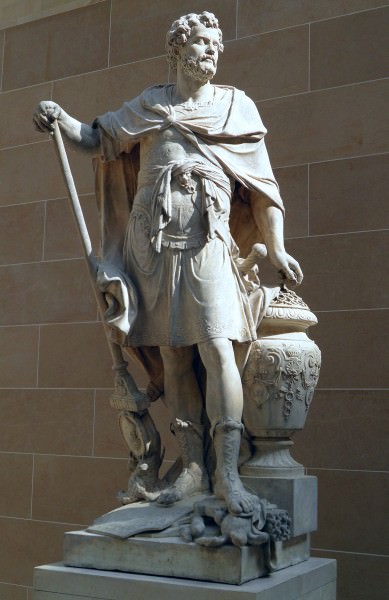
Hannibal Barca
The Second Punic War was known by Roman historians as “Hannibal's War” because he both started it and defined it. The treaty which ended the First Punic War stipulated that Carthage could keep their territories in Spain but they were encouraged to use them to raise the tribute they were required to pay Rome. Hamilcar's expedition to Spain, in fact, was (officially, at least) sent expressly for this purpose.
The people of the city of Saguntum in Spain feared the growing Carthaginian presence and sent messengers to Rome asking for their protection. When a Roman delegation presented itself to Hannibal, requesting he leave Saguntum alone, he answered that the Romans could not be trusted to deal fairly with the people of the city and refused the request. He then marched on the city and took it, overthrowing the government the Romans had installed there, and so started the Second Punic War.
HASDRUBAL'S SPANISH CAMPAIGNS
Hannibal organized his forces with those closest to him in positions of command. Scholar Richard Miles notes how, at the apex of the army, “was an inner circle of key advisors mainly drawn from the Barcid clan, including Hannibal's two brothers Mago and Hasdrubal and his nephew Hanno” (237). Hannibal recognized that the best way to win the war was to take the fight to the Romans in Italy and so prepared to bring his army over the Alps.
According to Livy, he assigned Hasdrubal an army of 11,850 native infantry, 450 cavalry, 21 elephants, 1,800 Numidian and Moorish infantry, and 57 warships. Hannibal marched his army toward the Alps in April of 218 BCE, and Hasdrubal instantly set to work building defenses throughout Iberia, which included high watchtowers and a system of signals to warn of approaching attack.
Hasdrubal's early-warning system worked well but could not alert him to every contingency. In the fall of 218 BCE, Gnaeus Cornelius Scipio (265-211 BCE) defeated the outnumbered troops of Hanno at the Battle of Cissa and established a strong base of operations for Roman forces in the region. Hasdrubal arrived at the battle too late to help turn the tide but harried the Roman forces as well as he could in the aftermath and attacked their fleet, reducing it by almost half.

Campaigns of the Second Punic War
In 217 BCE Hasdrubal launched a naval attack on Scipio's forces on the Ebro in an attempt to cut Roman lines of communication and cripple their fleet. Although the engagement initially looked promising, the Roman allies from Marseille knew Carthaginian naval tactics and used these against them. The Carthaginians had long won naval battles by driving their ships against an opponent as if to attack but then sailing past them to turn around and ram the enemy ship. The Massilians knew this and arranged their warships in formation with those in front acting as a screen for other ships behind them. When the Carthaginian ships sailed in between the Massilian vessels, these reserve ships were able to attack them before they could make their traditional move. Hasdrubal lost most of the Carthaginian fleet in this battle and retreated without engaging further on land.
The Romans, following this victory, sent the general Publius Cornelius Scipio (died 211 BCE) to join his brother Gnaeus in Spain, and these two increased the pressure on Hasdrubal. They took Saguntum and released a number of important hostages held there by the Carthaginians, which helped win support for Rome from Iberian tribes. In 216 BCE, some of these tribes rebelled against Carthaginian rule and Hasdrubal had to turn his attention from the Romans to deal with these uprisings.
While Hasdrubal had been defending Carthaginian Spain, Hannibal had been conquering Italian cities. In August of 216 BCE he won his great victory at Cannae, but he had been defeating Roman forces and attracting allies since his arrival in the country in 218 BCE. Hannibal needed more soldiers to succeed, however, and in 215 BCE Hasdrubal was ordered by the Carthaginian senate to take his army into Italy to reinforce his brother's initiative. Hasdrubal objected to this on the grounds that Carthaginian hold on Spain was tenuous at the moment and would require a strong and experienced leader to hold. The senate sent an officer named Himilco (not the famous navigator, as is often claimed) to take command, and Hasdrubal marched for Italy.
ALONG WITH HIS BROTHER AND HASDRUBAL GISCO, HASDRUBAL HELD SPAIN AGAINST THE SCIPIOS & PREVENTED THEM FROM AIDING THE ROMAN TROOPS IN ITALY.
He was checked by the Romans under the Scipios at the Battle of Dertosa in spring of 215 BCE, however, and was badly defeated. The Scipios had not only prevented reinforcements from reaching Hannibal but had also severely weakened the Carthaginian land force in Spain. Following this defeat, the Carthaginian senate sent Mago Barca (243-203 BCE) and Hasdrubal Gisco (died 202 BCE) to Spain with reinforcements for Hasdrubal.
Along with his brother and Hasdrubal Gisco, Hasdrubal held Spain against the Scipios and prevented them from aiding the Roman troops in Italy. Even so, every engagement was a victory for the Roman brothers. In 213 BCE Hasdrubal was withdrawn from Spain to put down the offensive of the Numidian king Syphax in Africa. Allegedly, the Scipio brothers were behind Syphax's attack, hoping for just such a reaction from the Carthaginian senate. With Hasdrubal gone, the Scipios faced only Mago and Hasdrubal Gisco but, for some reason, do not seem to have taken any advantage of the opportunity.
When Hasdrubal returned to Spain in 211 BCE, he came with fresh reinforcements and supplies and mobilized the Carthaginian forces along with Mago and Hasdrubal Gisco. The Scipios, perhaps unaware of how large an army was assembled, divided their forces; Publius directed his army toward the lines of Mago and Hasdrubal Gisco while Gnaeus went to meet those of Hasdrubal Barca in another area. Hasdrubal greatly improved his odds by offering the Celtiberian mercenaries of Gnaeus' army a large bribe to just go home. They promptly accepted the money and left; thus reducing Gnaeus' army even further. The Scipios were both defeated and killed in the ensuing Battle of the Upper Baetis, and the Roman forces were driven from the field.
SCIPIO AFRICANUS & CLAUDIUS NERO
The death of the Scipios threw the Roman Senate into a panic. Hasdrubal now held Spain and Hannibal seemed unstoppable in Italy. No general wanted the job which had killed two of the greatest Roman generals of their generation. A younger Scipio volunteered for the job, however: Scipio Africanus (236-183 BCE), the son of Publius and nephew of Gnaeus. Scipio had been at the Battle of the Upper Baetis as well as at Cannae and knew both Hannibal's and Hasdrubal's tactics and formations. He was sent to Spain to take command of the forces left there.
At this same time, the Senate replaced the Scipios' command with the proconsul Gaius Claudius Nero (c. 237 - c. 199 BCE) who had recently contributed to Hannibal's defeat at the siege of Capua in Italy. Claudius Nero had earlier been involved in the Third Battle of Nola (214 BCE) which was also a Carthaginian defeat and so was thought the best man to replace the Scipio brothers should the young Scipio fail to live up to the family name. Scipio Africanus announced himself in Spain by taking New Carthage and styling himself – just as Hannibal had done – as a liberator, not a conqueror. He quickly proved himself an able military leader and adept administrator.

Scipio Africanus the Elder
Claudius Nero consolidated the forces left leaderless after the Scipios' defeat and led them against Hasdrubal, trapping him at the Black Stones Pass. Hasdrubal, according to Livy, outsmarted Nero here by asking for negotiations to allow his army safe passage after surrender. Nero agreed, and every day Hasdrubal would appear at the Roman camp to talk while every night he sent more and more of his army secretly away under cover of darkness. On the last day of negotiations, a thick fog covered the area in the morning and Hasdrubal sent word to Nero that he could not come to the talks because of religious reasons.Once he received word that Nero had excused him, he packed up the rest of his army and slipped away. Only once the fog had lifted was Nero made aware that the entire Carthaginian army had escaped.
Nero was then recalled to Italy to deal with Hannibal while Scipio continued the war in Spain. In 208 BCE, Hasdrubal positioned his army in a strong defensive position below the town of Baecula and invited Scipio to join in battle. In order to attack Hasdrubal, Scipio would have to cross a small river and then charge up a slope against a fortified position.Understanding the severity of the losses this would entail, Scipio refused to play by Hasdrubal's rules and devised his own.
He noticed that there were dried gulleys on either side of the plateau Hasdrubal had fortified and so, once across the river, he sent a lightly-armed force straight ahead and up the slope but divided his main force toward the two gulleys. The Carthaginians moved to meet the center and were crushed by the two wings moving in from the gulleys; precisely the same tactic Hannibal had used to defeat the Romans at Cannae in 216 BCE.
Hasdrubal fled Baecula with the troops he could save and evaded Scipio as he made his way out of Spain. Although it has been claimed that Hasdrubal was ordered to Italy by the Carthaginian senate, it seems more likely it was his own idea to join his brother in a concentrated effort against the city of Rome itself.
THE ITALY CAMPAIGN & METAURUS
Hasdrubal crossed the Alps in the spring of 207 BCE and, upon reaching Italy, began his march south to find Hannibal. He has been routinely criticized for stopping to lay siege to the Roman colony of Placentia as this move was unnecessary considering the importance of joining Hasdrubal's forces with Hannibal's and was also a failure which accomplished nothing but wasting valuable time. Even so, some historians note that Hasdrubal could not leave a fortified Roman position in his rear and also needed to wait at some well-defined location for the Gallic troops he had recruited to catch up to him.
While Hasdrubal was at Placentia, Hannibal was trying to make his way north to meet him; having no idea at all where he was.The Romans had secure and reliable systems of communication in place but the Carthaginians had none. Scholar Ernle Bradford comments:
Hannibal knew no more than that Hasdrubal should by now be across the Alps and Hasdrubal, who was already in Italy, knew no more than that Hannibal was somewhere in the south. The Romans, on the other hand, working from their interior lines of communication and supply systems, were in an admirable position to keep their two enemies apart and to tackle them one at a time with their superior forces. (171)
Hannibal's march north was checked near Bruttium by Claudius Nero and was forced into a number of running engagements between Bruttium and Lucania. He could not shake Nero loose but neither could Nero keep Hannibal in place. At some point, Hannibal sent messengers north to try to locate Hasdrubal and direct him to his location. The messages were received and Hasdrubal wrote back, sending four Gallic horsemen and two Numidians to deliver his response as quickly as possible.
Hasdrubal wrote these letters in his native language – not in any kind of code – perhaps because he was in haste. This would not have been a problem if they had reached their destination, but they did not. The messengers got lost and were captured near Tarentum, tortured, and gave up the letters, which provided the Romans with Hasdrubal's location and troop strength.This intelligence was delivered to Nero who quickly put a plan into action.
In between the time Hasdrubal sent his letters and when the messengers were captured, a Roman army under the command of Marcus Livius Salinator (254-204 BCE) and L. Porcius Licinius (c. 207 BCE) had located him and held his army near the Metaurus River in northern Italy. This information reached Nero just prior to Hasdrubal's messages. Nero left his army to hold Hannibal in place and slipped away with 6,000 legionaries and 1,000 cavalry during the night. He made sure to screen his departure so Hannibal would be unaware of the decreased strength of his forces.
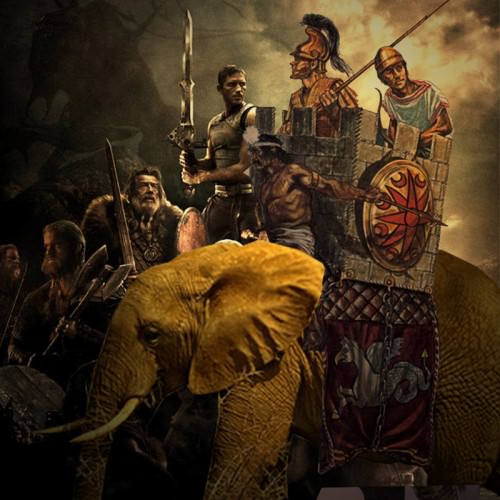
Hannibal Riding a War Elephant
Arriving at the Metaurus, Nero again waited until night to join the other two generals, billeting his men among those already encamped so there would be no new tents for the enemy to observe and alert them to reinforcements. The Carthaginian camp was no more than a half mile away from the Romans, and Hasdrubal had kept a careful watch so that he knew the strength of the army and what to expect in battle.
On the morning after Nero arrived, Hasdrubal noticed leaner horses in the camp and different shields on display and ordered his men to reconnoiter. They reported back that all was as it had been and there was no evidence of new troops but they had observed something strange: when the morning orders were given by trumpet, one was sounded in the praetor's camp but two were sounded in the consul ’s camp. Hasdrubal recognized that this meant there were now two consuls present and, if two consuls, a greater force than before.
Hasdrubal had been moving his army into formation to give battle but now he paused. He seems to have concluded that Hannibal must have been defeated and could only be dead because the newly-arrived consul would undoubtedly have been engaged with him and would never have been free to join these forces otherwise. He gave orders to stand down from the attack and, that night, quietly retreated toward the Metaurus River, probably intending to cross the next morning. His army got lost in the darkness, however, and when morning came the troops were strung out in a long and disordered line along the south bank of the river.
Nero again acted decisively ordering an attack against the counsel of the other two generals. Hasdrubal drew up his army in formation as best he could and held the lines until Nero moved his troops back behind the advancing Roman line and threw them against Hasdrubal's right wing, breaking it. The Roman advance at first caused the Carthaginians to fall back, but then the retreat turned into a rout, and the rout a massacre. Hasdrubal, realizing he was defeated and his brother probably dead, rode into the Roman lines swinging his sword and was killed.
CONCLUSION
Having neutralized Hasdrubal's threat, Nero marched his men back south and rejoined his army. There is no evidence that Hannibal ever knew he had gone anywhere. Hannibal was still waiting for word from his brother when Roman cavalry rode up to his camp and hurled a dark, round object toward the sentries; it was Hasdrubal's head. When it was delivered to Hannibal he is alleged to have said, “I see there the fate of Carthage” (Bradford, 177). The hopes Hannibal had of uniting with his brother for a concentrated attack on Rome were dashed and, lacking reinforcements, Hannibal recognized that he could only continue on playing the same kind of cat-and-mouse maneuvers with the Romans as he had been doing.
Scipio Africanus, having won Spain for the Romans, had other plans for Hannibal, however. He believed that if he threatened Carthage itself that Hannibal would be recalled from Italy to defend it and Scipio could defeat him in Africa. Scipio's plan worked exactly as he imagined: Hannibal was recalled with his troops and Scipio defeated him at the Battle of Zama in 202 BCE. The Second Punic War was over, and Rome was the victor.
Hannibal survived the battle and eventually left Carthage to avoid being handed over to his enemies. Continually pursued by the Romans, he finally committed suicide by poison at the court of the king of Bithynia in 183 BCE at the age of 65. His exploits in the war became legendary in his own time, but Hasdrubal was given considerably less notice. Even so, Hasdrubal Barca was an impressive and inspiring leader who was finally only defeated by generals using his brother's own kind of tactics against him.
LICENSE:
Article based on information obtained from these sources:with permission from the Website Ancient History Encyclopedia
Content is available under License Creative Commons: Attribution-NonCommercial-ShareAlike 3.0 Unported. CC-BY-NC-SA License